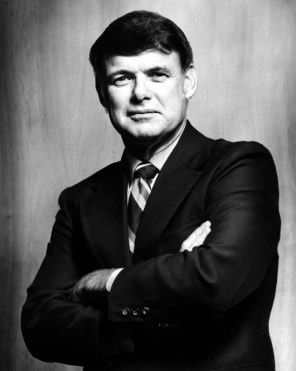Image may be NSFW.
Clik here to view. published 31/08/2013 at 15:19 PM by Matt Schudel
published 31/08/2013 at 15:19 PM by Matt Schudel
Bruce C. Murray, a former director of the Jet Propulsion Laboratory, who was an ambitious proponent of space exploration and among the first to emphasize the use of photography of other
planets, died Aug. 29 at his home in Oceanside, Calif. He was 81.
Image may be NSFW.
Clik here to view.
(AP) - This undated photo provided by the NASA/Jet Propulsion Laboratory in Pasadena, Calif., shows former JPL Director Bruce Murray. A longtime friend said Murray died early Thursday, Aug. 29, 2013, of Alzheimer's disease. He was 81.
He had Alzheimer’s disease, the Planetary Society, an organization he helped found, announced in a statement.
Dr. Murray was director of the Jet Propulsion Laboratory, a space exploration arm of NASA, from 1976 to 1982. He began working for the space laboratory in 1960 while serving as a geology
professor at the California Institute of Technology, which manages the JPL, based in Pasadena, Calif.
As a part of the scientific team that launched the Mariner series of missions to Mars and other planets in the 1960s and 1970s, Dr. Murray was one of the first scientists to highlight the use of
photography in space science.
Mariner 4 transmitted pictures of the terrain of Mars back to Earth in 1965, the first time images of the surface of another planet had been seen. Dr. Murray used the images obtained from the
Mariner missions to develop a geological history of Mars. In the early 1970s, he was the top scientist of the Mariner 10 mission, which photographed Venus and Mercury.
Expectations were high when Dr. Murray took over the Jet Propulsion Laboratory in 1976. That year, two Viking missions reached Mars, dispatching automated roving vehicles to the surface, where
they collected samples of soil and rocks in an effort to determine if life existed on the Red Planet.
Dr. Murray had misgivings about the Viking projects, suggesting that they were launched before scientists had a reliable understanding of the Martian atmosphere and surface.
Later in the 1970s, two Voyager spacecraft probed the deeper recesses of the solar system, but, to Dr. Murray’s disappointment, the era of interplanetary space exploration was already at its
zenith.
He said there were two kinds of missions — purple pigeons and gray mice — that the JPL could pursue. He favored “purple pigeons,” or projects that captured the public imagination and made a big
splash in the scientific world, such as a rendezvous with a comet. “Gray mice” missions, by comparison, were less dramatic.
But Dr. Murray’s bright-hued hopes for space exploration were thwarted by continued budgetary battles with Congress and changing priorities. The space shuttle program claimed a higher profile at
NASA, as public support for the unmanned exploration of outer space began to wane.
In the early 1980s, the funding emphasis at the space laboratory began to shift from pure science to something that began to resemble an adjunct of military preparedness. Dr. Murray said he was
not necessarily opposed to the change — “Quite the opposite; I was the architect of the shift,” he said in 1982 — but he noted that other scientists were not as comfortable working on programs
with military applications.
“A number of people came to JPL over the years specifically because they did not want to work on defense projects,” Dr. Murray said. “There is a small number of people, especially young people,
who feel that defense work is immoral.”
When Dr. Murray resigned from the JPL in 1982, he was replaced by Lew Allen Jr., a retired Air Force general who had been the director of the National Security Agency.
Bruce Churchill Murray was born Nov. 30, 1931, in New York and graduated from high school in Santa Monica, Calif. He received three degrees from the Massachusetts Institute of Technology,
including a PhD in geology in 1955. He was a petroleum geologist in Louisiana before serving as a scientist with the Air Force in the late 1950s.
In 1979, when he was still at the JPL, Dr. Murray and renowned scientist Carl Sagan founded the Planetary Society, which seeks to raise awareness of space science. Dr. Murray was president of the
organization for five years after Sagan’s death in 1996.
Dr. Murray was the author of several books, including “Journey Into Space: The First Thirty Years of Space Exploration” (1989). He received an exceptional scientific achievement medal from NASA
in 1971 and a distinguished public service medal in 1974. An asteroid is named in his honor.
After leaving the JPL, he returned to Caltech, where he taught until 2002. He also worked on joint U.S. space ventures with the Soviet Union, Japan and China.
His marriage to Joan O’Brien ended in divorce. Survivors include his wife of 41 years, the former Suzanne Moss; three children from his first marriage; two children from his second marriage; and
11 grandchildren.
In 2001, Dr. Murray discussed the importance of exploring Mars and other planets in an interview with United Press International.
“We want to find out, is there water? Could you build a greenhouse? Is it a potential habitat?” he said. “It’s another step in extending human mobility and our sense of what, as a species, we are
capable of.”